Similar presentations:
Hormonal Regulation of the Estrous Cycle
1. Hormonal Regulation of the Estrous Cycle
LessonHormonal Regulation of the
Estrous Cycle
2. Hormones of female reproduction
EstrogensProgesterone
Gonadotropins
3. Estrogens
The important estrogens in mammals aresteroids, produced by the ovary (granulosa
cells of follicles), placenta, and adrenal cortex.
Estradiol-17β and estrone are estrogens that
predominate in domestic nonpregnant and
pregnant animals, respectively.
4. Generally, the principal function of the estrogens is to cause cellular proliferation and growth of the tissues related to
reproduction. Tissueresponses caused by estrogens include:
1. stimulation of endometrial gland growth;
2. stimulation of duct growth in the mammary
gland;
3. increase in secretory activity of uterine
ducts;
4. initiation of sexual receptivity;
5.
5. regulation of secretion of luteinizinghormone (LH) by the anterior pituitary gland;
6. possible regulation of PGF2α release from
the nongravid and gravid uterus;
7. early union of the epiphysis with the shafts
of long bones, whereby growth of long bones
ceases;
8. protein anabolism;
9. epitheliotropic activity.
6. Progesterone
Progesterone, like the estrogens, is a steroidsex hormone produced by the corpus luteum
(CL) of the ovary, placenta, and adrenal cortex.
It is the principal progestational hormone.
Certain synthetic and natural progestational
agents are called progestins.
7. The activities associated with progesterone are often performed in concert with estrogens, and usually require previous
estrogen priming. The functions ofprogesterone include:
1. promotion of endometrial gland growth,
2. stimulation of secretory activity of the
oviduct and endometrial glands to provide
nutrients for the developing embryo before
implantation
8.
3. promotion of lobuloalveolar growth in themammary gland
4. prevention of contractility of the uterus
during pregnancy
5. regulation of secretion of gonadotropins.
9. Gonadotropins
Follicle-stimulating hormone (FSH) andluteinizing hormone (LH) are collectively
referred to as the gonadotropins because of
their role in stimulating cells within the ovary
and testis (the gonads).
FSH and LH are hormones secreted by cells
within the anterior pituitary. Both are classified
chemically as glycoproteins
10.
The main function of FSH in the female ispromotion of the growth of follicles.
LH is important for the ovulatory process and
the luteinization of the granulosa, an essential
aspect of CL formation.
11.
FSH and LH concentrations exist in the plasmaat a tonic or basal level.
These levels are controlled by negative
feedback from the gonads. Tonic levels are
increased by estrogen and decreased by
progesterone.
12.
The release of FSH and LH from the anteriorpituitary is controlled by a gonadotropin
releasing hormone (GnRH) from the
hypothalamus.
GnRH is secreted in response to low levels of
LH or FSH and is then followed by secretion
of LH or FSH.
13.
The concentrations of estrogens andprogesterone also influence the amount of LH
or FSH secretion.
Generally, an increasing concentration of
estrogen causes an increase in sensitivity of the
anterior pituitary to GnRH, and results in an
increased release of gonadotropins.
14.
Progesterone decreases sensitivity of theanterior pituitary to GnRH, and LH and FSH
concentrations decrease.
These influences, particularly those of
estrogen, depend on gradually increasing
concentrations of estrogen over a period of
time, which results in the preovulatory surge of
LH release.
Conversely, when estrogen concentration is
basal and of short duration, LH and FSH
secretions are suppressed.
15. Prostaglandins
The prostaglandins were first isolated fromaccessory sex gland fluids and were termed
prostaglandins because of their association
with the prostate gland. It is now recognized
that they are secreted by almost all body
tissues and, indeed, the prostate gland
association is too narrow a definition.
16.
The prostaglandins are derived fromarachidonic acid. The prostaglandins are
usually short-acting. Some forms never appear
in the blood (so some have not been classified
as hormones) and others are degraded after
they circulate throughout the liver and lungs.
17.
Prostaglandin F2α (PGF2α) is the naturalluteolytic agent that terminates the luteal phase
of the estrous cycle and allows for the
initiation of a new estrous cycle in the absence
of fertilization. PGF2α is also particularly
potent in terminating early pregnancy.
18.
The prostaglandins promote inflammation. Theanti-inflammatory activity of aspirin (and of
other drugs) is a result of its ability to inhibit
the synthesis of prostaglandin G2 (PGG2)
from arachidonic acid.
19. Summary of Ovarian Cycle Events
1. After regression of the CL (luteolysis causedby PGF2α), FSH and LH secretion increases
(because of a decrease in the concentration of
progesterone).
2. LH stimulates secretion of androgens by the
theca interna cells, which diffuse into the
granulosa cells.
20.
3. FSH stimulates conversion of androgen toestrogen by the granulosa cells, and the
estrogen concentration gradually increases.
4. FSH stimulates the formation of LH
receptors on the granulosa cells.
5. Estrogen-rich fluid formed by the granulosa
cells separates the granulosa cells and forms a
pocket known as an antrum
21.
6. The gradually increasing estrogenconcentration causes a preovulatory surge of
LH release.
7. The LH surge promotes the maturation of
oocytes by resuming meiosis through the first
polar body stage.
8. The LH surge promotes the intrafollicular
production of prostaglandins A and E (PGA
and PGE), associated with rupture of the
follicle.
22.
9. Concomitant with PGA and PGE productionis the formation of multivesicular bodies
(MVB), which form as out-pockets of the
exposed theca externa.
10. MVBs seem to secrete proteolytic enzymes
that digest ground substance cementing the
theca externa fibroblasts, allowing escape of
the oocyte (ovulation).
23.
11. The LH surge causes reduction in thenumber of FSH receptors on the granulosa
cells, so the rate of conversion of androgen to
estrogen diminishes.
12. LH attaches to granulosa cell LH receptors
and begins the conversion of the granulosa
from estrogen secretion in the follicular phase
to progesterone secretion in the luteal phase.
24.
13. At some point in the latter stages of theseevents, ovulation occurs and the cavity
previously occupied by the mature follicle
becomes a corpus luteum.
14. The corpus luteum secretes progesterone,
which causes a decrease in the output of FSH
and LH by the anterior pituitary.
25.
15. The corpus luteum regresses and the outputof progesterone begins to decrease.
16. A decrease in the level of progesterone
causes FSH and LH secretion to increase, and
the cycle is repeated.
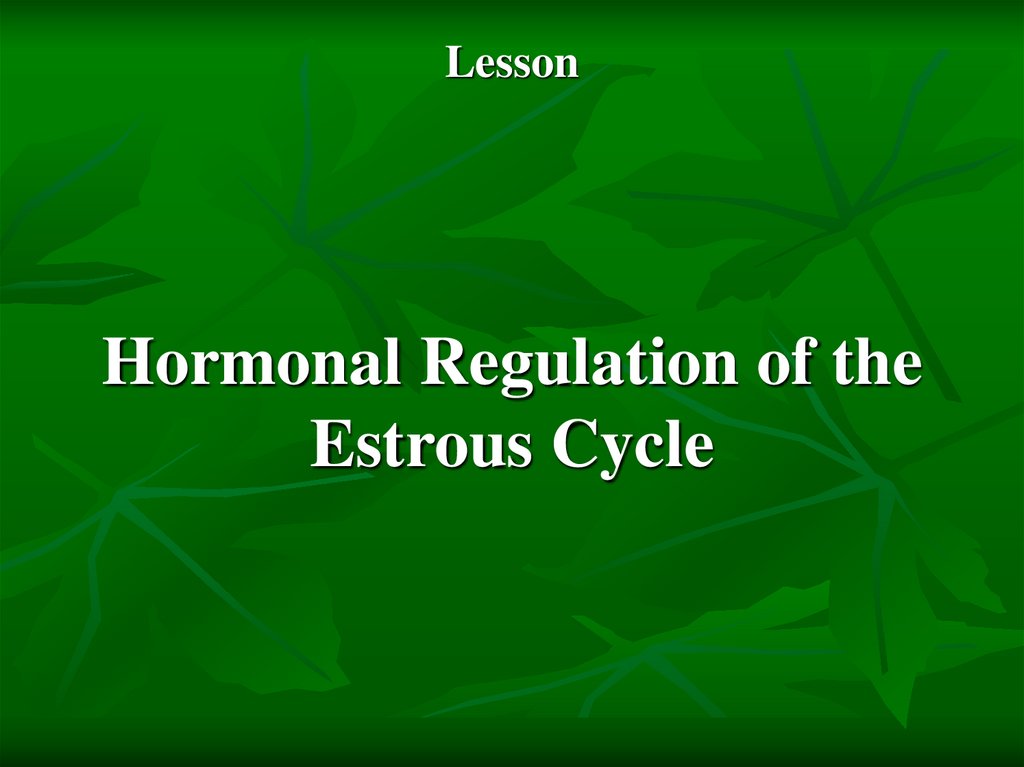













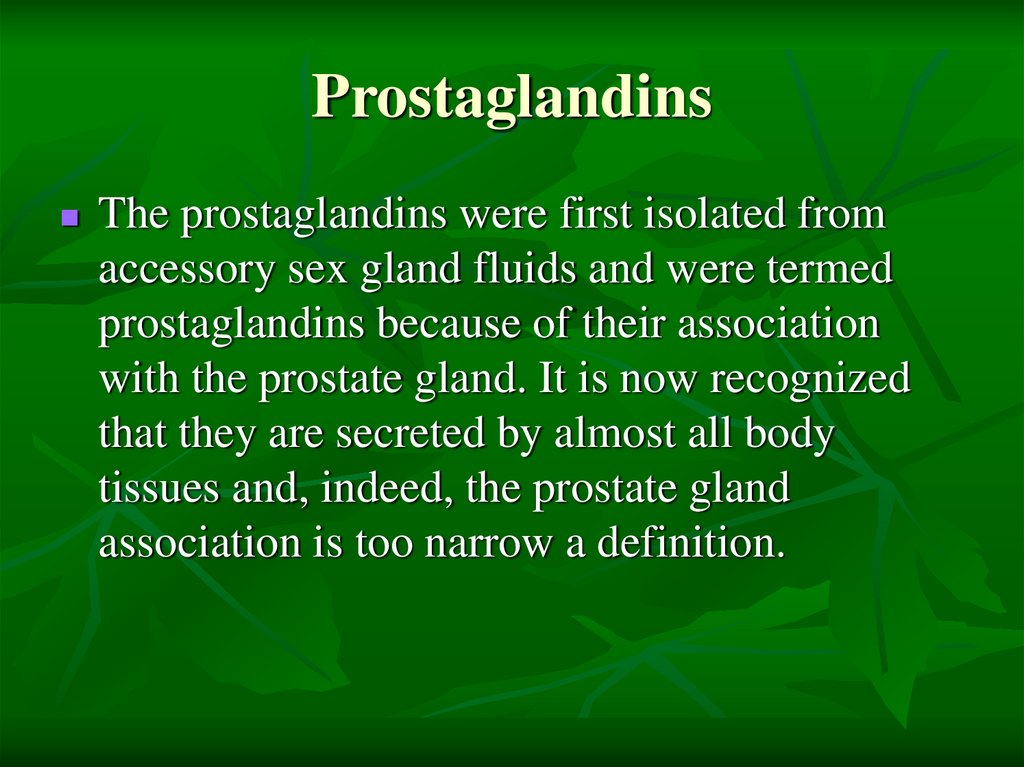
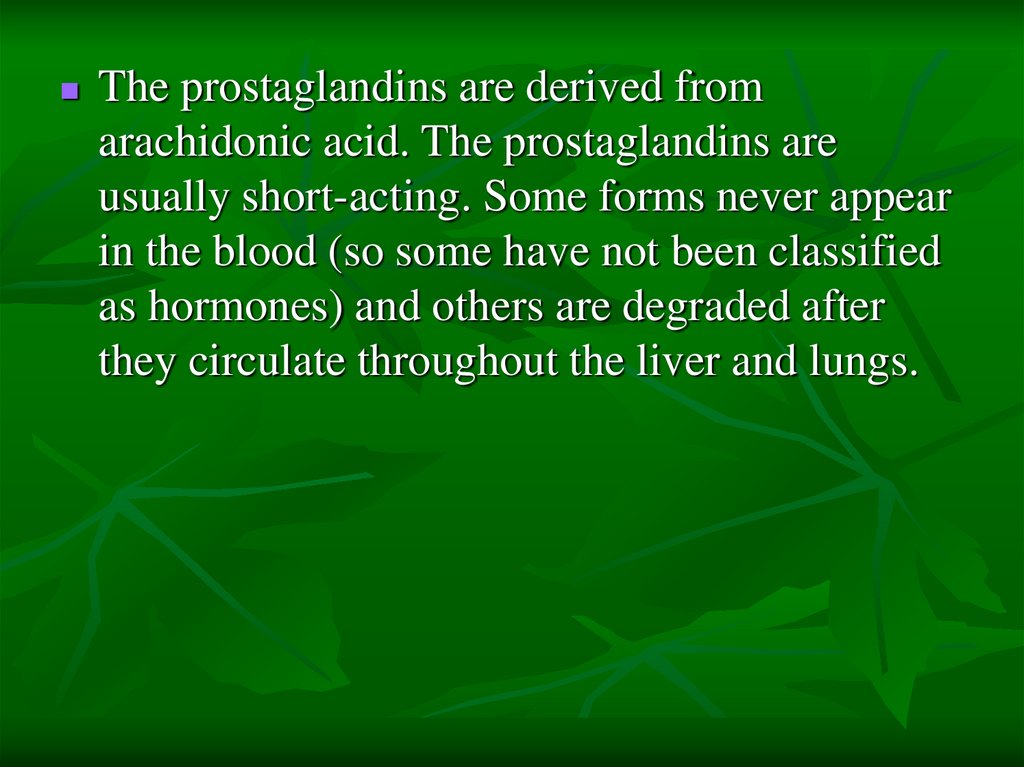

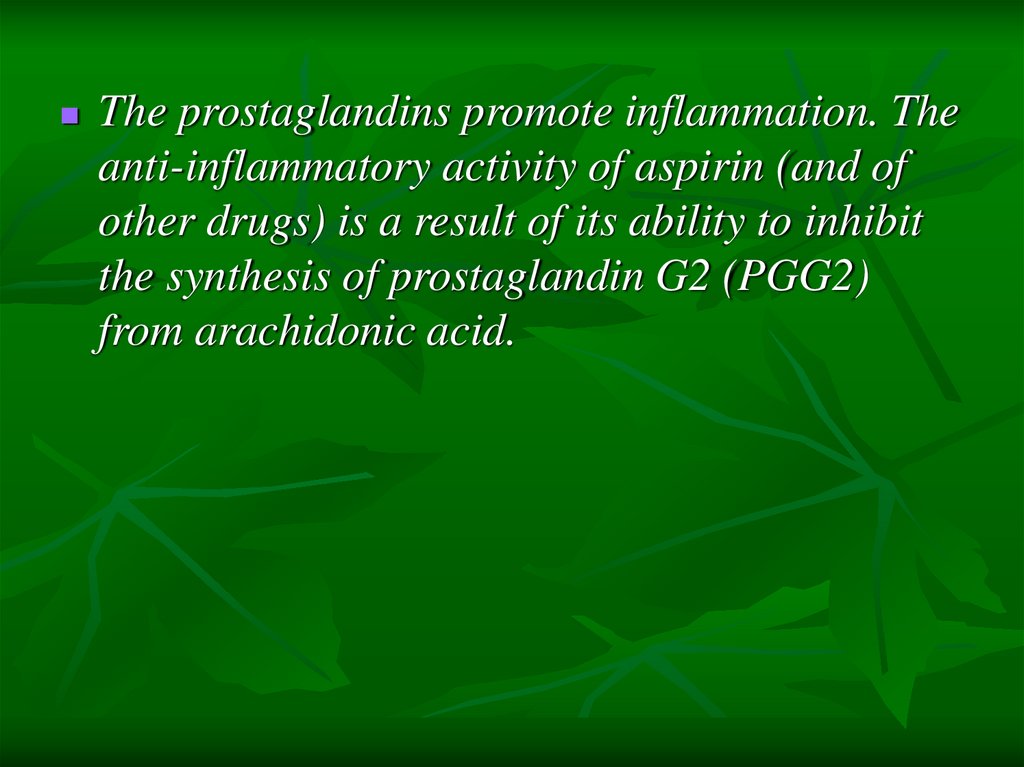
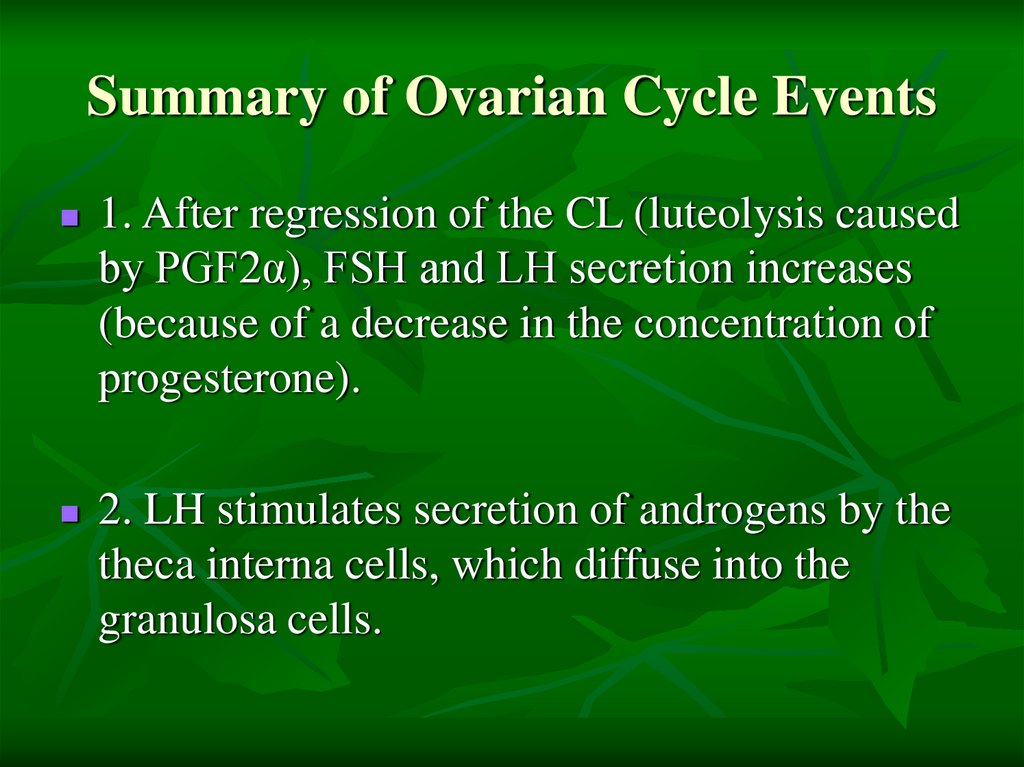
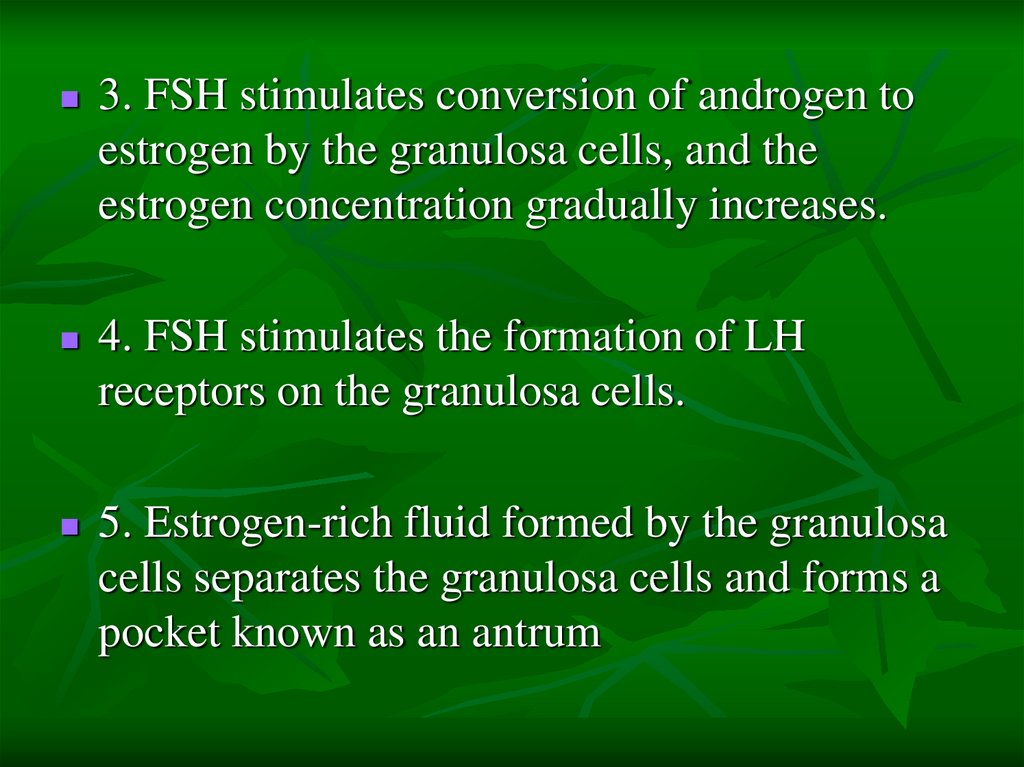


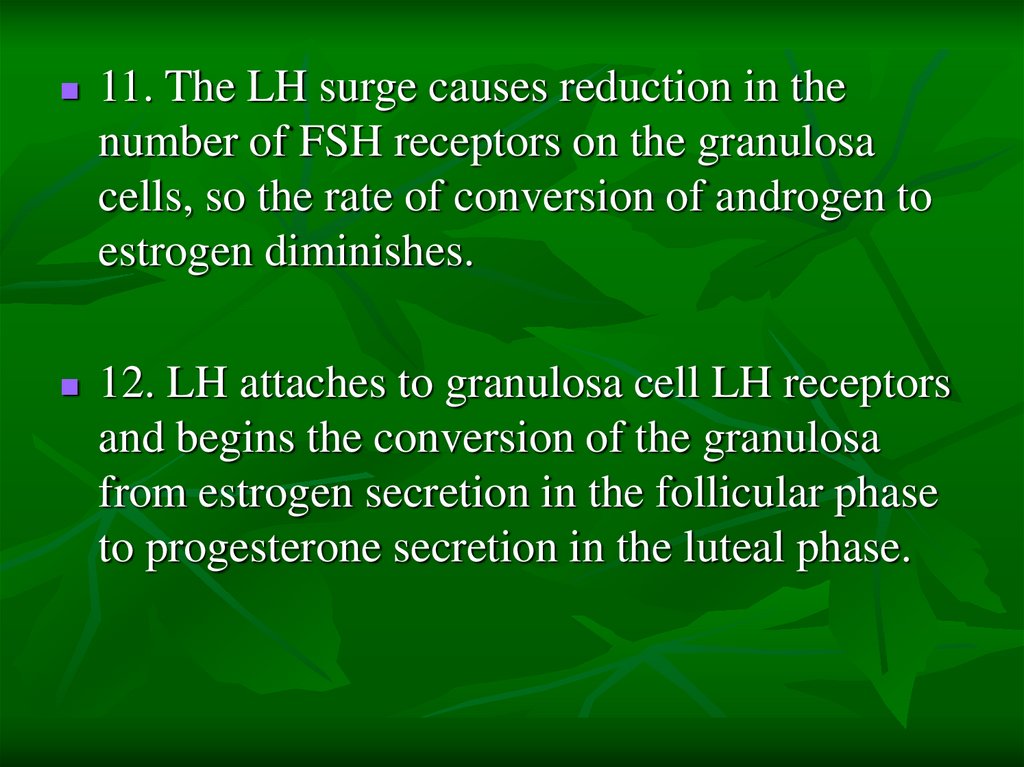
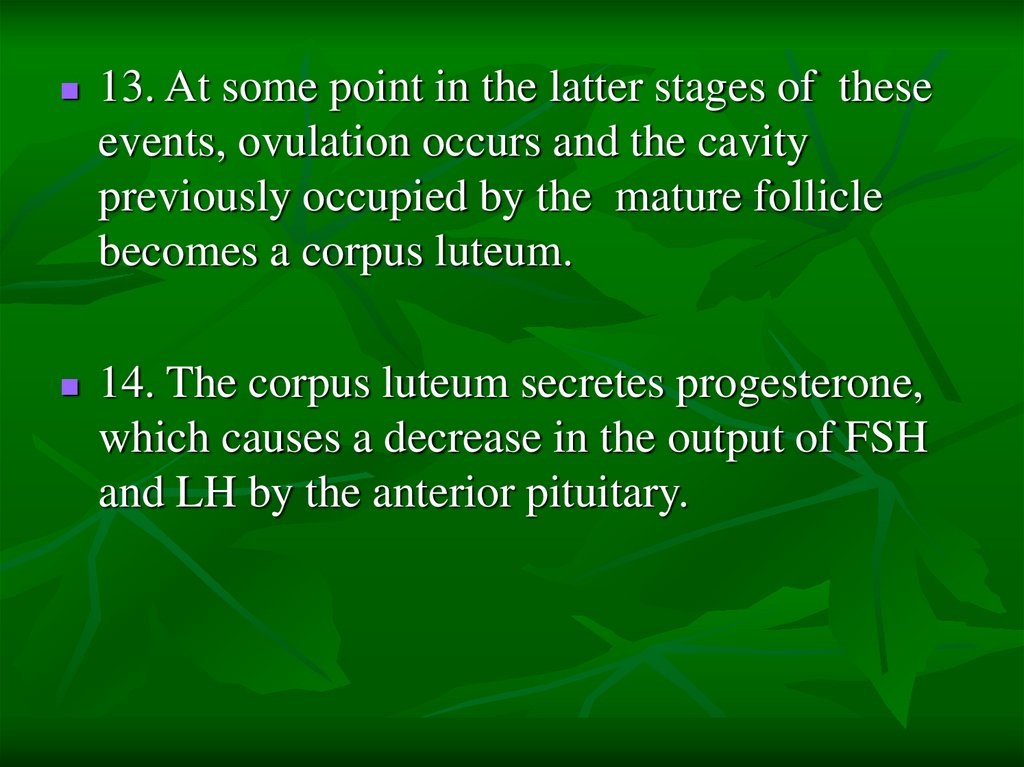
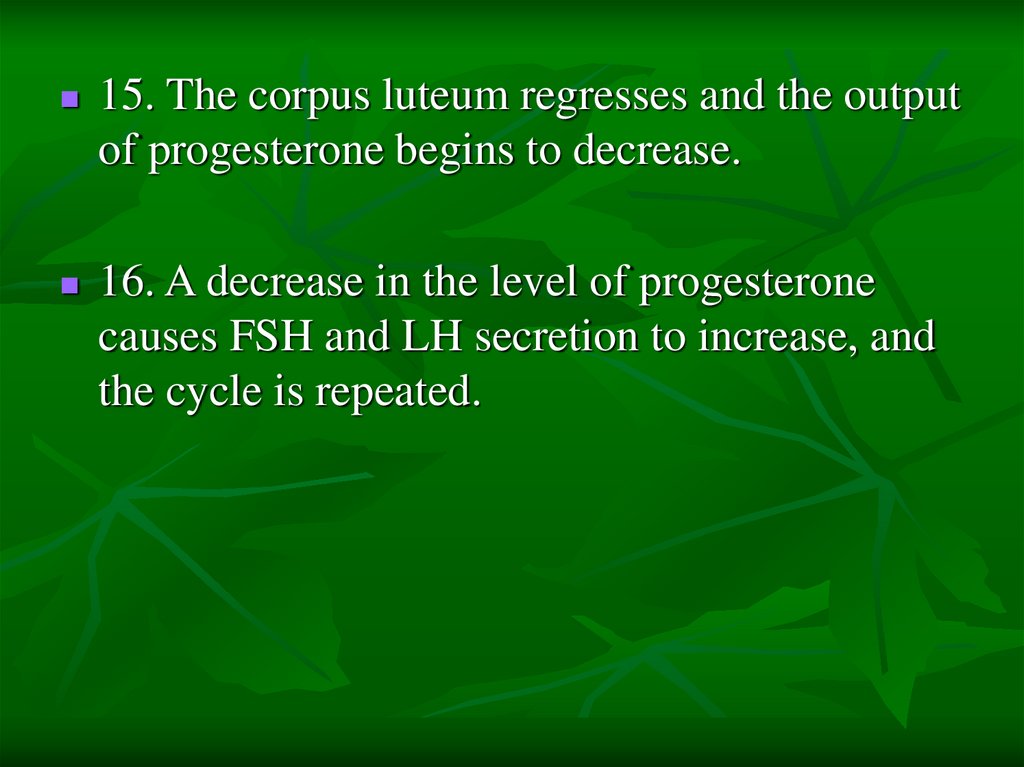
 medicine
medicine








